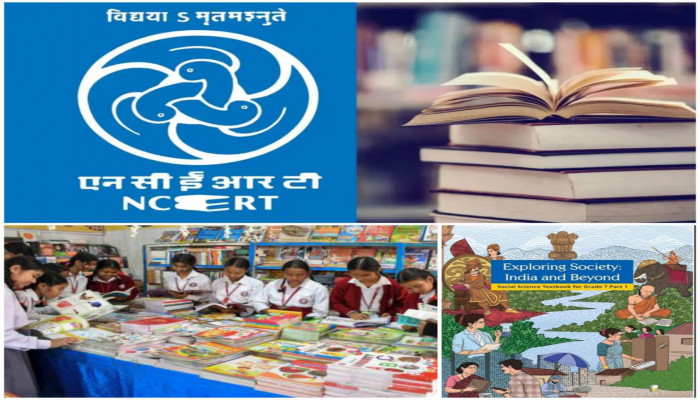NCERT reshapes class 7 textbook contents, drops Mughals and Sultanates
- In Reports
- 05:04 PM, Apr 28, 2025
- Myind Staff
In a significant development, the National Council of Educational Research and Training (NCERT) has updated the Class 7 English and Social Science textbooks. The changes are intended to highlight Indian culture, heritage, and contemporary national issues. The revisions include removing content about the Mughals and the Delhi Sultanate, introducing new chapters on Indian dynasties, 'sacred geography,' the Maha Kumbh, and government initiatives such as Make in India and Beti Bachao, Beti Padhao. These updates are in line with the National Education Policy (NEP) and the National Curriculum Framework for School Education (NCFSE) 2023.
According to NCERT officials, the current book is just the first part, with the second part expected to be released in the coming months. However, they did not clarify whether the removed sections will be included in the second part. Previously, the council had shortened content on the Mughals and the Delhi Sultanate, cutting detailed sections about dynasties like the Tughlaqs, Khaljis, Mamluks, and Lodis, as well as a two-page table on the achievements of Mughal emperors, as part of its syllabus adjustments during the COVID-19 pandemic in 2022–23. The new textbook has now completely removed any references to these topics.
The new textbook edition introduces completely revised chapters that leave out mentions of the Mughals and the Delhi Sultanate. The Social Science book, titled "Exploring Society: India and Beyond", now focuses on ancient Indian dynasties like the Magadha, Mauryas, Shungas, and Sātavāhanas, focusing on promoting "Indian ethos."
A newly added chapter, "How the Land Becomes Sacred", explores sacred places and pilgrimages in India and worldwide across different religions, including Islam, Christianity, Judaism, Zoroastrianism, Hinduism, Buddhism, and Sikhism. The chapter brings in concepts like "sacred geography". It discusses crucial pilgrimage circuits such as the 12 Jyotirlingas, the Char Dham Yatra, and the "Shakti Pithas," along with sacred natural sites like rivers, mountains, and forests. It also features a quote from Jawaharlal Nehru, who described India as a land rich with pilgrimages stretching from the snowy peaks of Badrinath and Amarnath to Kanyakumari in the south.
The textbook explains that the varna-jati system initially helped maintain social order but later became rigid, particularly during British rule, leading to widespread social inequalities. It also highlights the Maha Kumbh Mela held earlier this year in Prayagraj, mentioning that around 660 million people attended.
The new textbooks mention government initiatives like Make in India, Beti Bachao Beti Padhao, and the Atal Tunnel. A chapter on the Indian Constitution also highlights that there was a time when citizens weren't allowed to display the national flag at their homes. "This changed in 2004 when a citizen asserted his right to show pride in his country and challenged the rule in court. The Supreme Court concurred, stating that displaying the flag is part of the Fundamental Right to Freedom of Expression. We can now proudly fly the tricolour, ensuring it is never dishonoured," the chapter says.
In the new English textbook "Poorvi," out of 15 stories, poems, and narratives, nine are either written by Indian authors or centre around Indian themes and characters, featuring works by writers like Rabindranath Tagore, APJ Abdul Kalam, and Ruskin Bond. By comparison, the earlier textbook "Honeycomb" had 17 pieces, but only four were authored by Indians.
The revamp of NCERT textbooks has faced criticism from opposition parties, who have accused the government of "saffronisation." In an interview with PTI last year, NCERT Director Dinesh Prasad Saklani said, "Teaching about riots can make young children negative citizens."







Comments